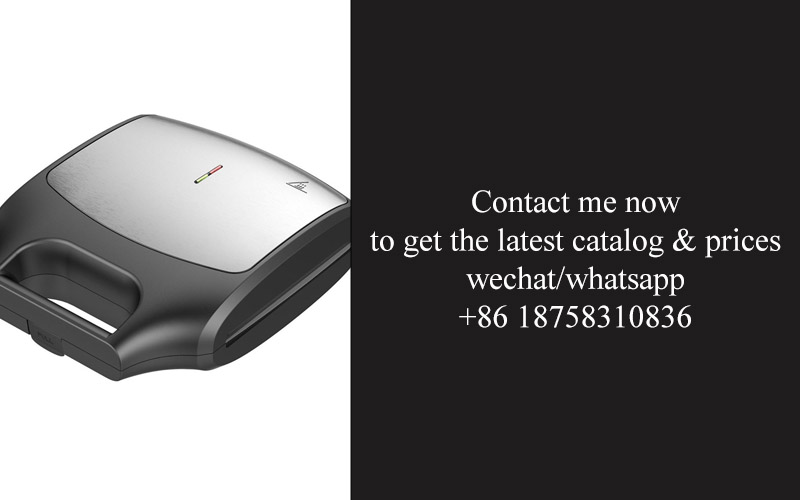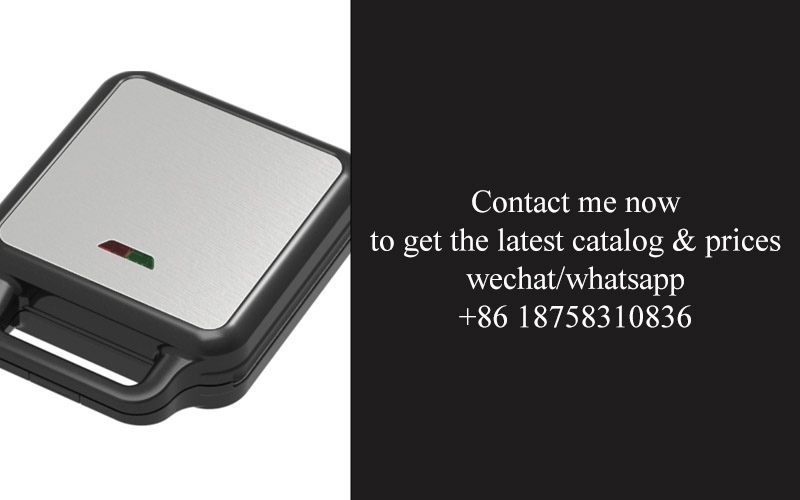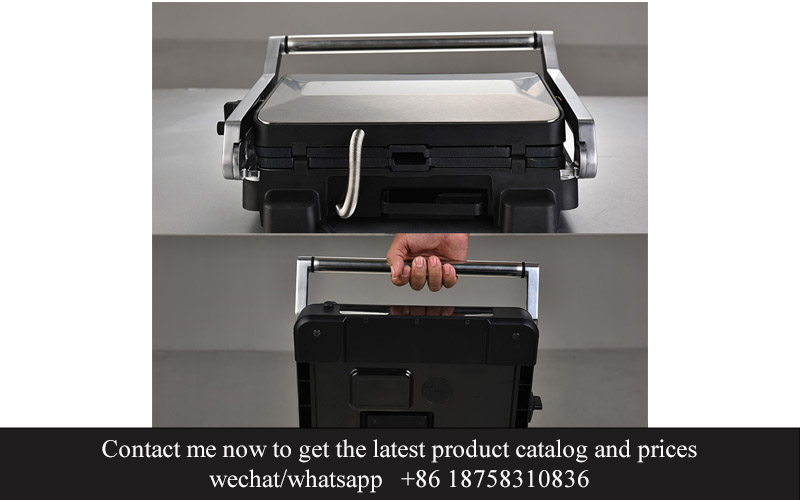Address
304 North Cardinal
St. Dorchester Center, MA 02124
Work Hours
Monday to Friday: 7AM - 7PM
Weekend: 10AM - 5PM
Address
304 North Cardinal
St. Dorchester Center, MA 02124
Work Hours
Monday to Friday: 7AM - 7PM
Weekend: 10AM - 5PM

In the ever-evolving world of kitchen appliances, the humble sandwich plate has quietly transformed from a simple cooking tool into a symbol of innovation and design. Its journey from traditional cookware to cutting-edge culinary accessories is a testament to the power of technology and the relentless pursuit of excellence. As we delve into the realm of integrated metal stamping, we uncover a world where functionality meets aesthetic appeal, and the future of kitchenware is being shaped by the precision and versatility of this remarkable process.
In the heart of the culinary revolution, a new wave of innovation is reshaping the kitchen scene, and at the forefront of this transformation is the rise of integrated metal stamping for sandwich plates. These aren’t just ordinary plates; they’re the cornerstone of a modern kitchen that values both style and substance.
Imagine a world where your kitchenware isn’t just functional but also a testament to cutting-edge design. Integrated metal stamping has brought this vision to life, turning sandwich plates into works of art that can withstand the rigors of everyday cooking. The process, which involves forming metal into intricate shapes, has become a game-changer for manufacturers and consumers alike.
Metal stamping isn’t new, but its application in sandwich plates is a fresh take on an age-old concept. These plates are designed with layers, often featuring a non-stick interior and a durable exterior, creating a sandwich-like structure that’s both practical and elegant. It’s this blend of form and function that’s making integrated metal stamping a hit in the kitchenware market.
The beauty of metal stamping lies in its versatility. It allows for intricate patterns and designs that traditional methods cannot achieve. From sleek, minimalist lines to bold, artistic flourishes, the possibilities are virtually limitless. This design freedom has led to a surge in creativity, with manufacturers pushing the boundaries of what kitchenware can look like.
But it’s not just about aesthetics; durability is key. The process of metal stamping results in a strong, robust plate that can handle the heat and pressure of cooking. It’s resistant to cracking, warping, and corrosion, making it a reliable companion for everything from a quick stir-fry to a lavish casserole. This resilience is a game-changer for those who demand quality and longevity from their kitchenware.
One of the standout features of sandwich plates crafted through metal stamping is their non-stick interior. This innovation means less scrubbing and more time enjoying your meal. The smooth, easy-to-clean surface is a godsend for busy cooks, reducing the hassle of post-cooking cleanup.
Sustainability is another factor that cannot be overlooked. The use of metal in kitchenware is not only eco-friendly but also has a lower carbon footprint compared to some other materials. Plus, the longevity of metal stamping plates means fewer are sent to the landfill, contributing to a more sustainable future.
In the competitive kitchenware market, it’s all about standing out. And standing out means more than just good looks; it’s about offering something that truly enhances the cooking experience. Integrated metal stamping for sandwich plates is doing just that by providing a product that is both visually appealing and highly functional.
The demand for these innovative sandwich plates is on the rise, and it’s easy to see why. Consumers are seeking more from their kitchenware, and the integrated metal stamping process delivers on all fronts. From the design-savvy home chef to the busy professional, these plates are becoming a staple in modern kitchens.
Looking ahead, the future of sandwich plates is bright. As technology continues to evolve, we can expect even more innovative designs and features to hit the market. Imagine plates that can adjust to different temperatures, or ones that integrate smart technology to guide you through the cooking process. The possibilities are as limitless as the imagination.
In conclusion, the rise of integrated metal stamping for sandwich plates is more than just a trend; it’s a testament to how far kitchenware has come. It’s a fusion of art and functionality that’s redefining what a kitchen can be. So, as you consider your next set of dinnerware, remember the sandwich plate—it’s not just a plate; it’s a piece of the culinary revolution.

Integrated metal stamping is a manufacturing process that has revolutionized the production of various components, including those found in the kitchen. This technique involves the use of stamping presses to shape flat sheets of metal into complex three-dimensional forms. Let’s delve into a brief overview of what integrated metal stamping entails.
The process begins with selecting the appropriate metal, which is typically steel due to its strength and malleability. The metal is then cut into sheets of varying thicknesses, depending on the required strength and durability of the final product. These sheets are meticulously cleaned to ensure they are free from any impurities that could affect the stamping process.
Once the metal sheets are prepared, they are fed into a stamping press. The press consists of a die and a punch, which are precision-machined tools that shape the metal. The die is the stationary part, while the punch moves against it to form the desired shape. The process is highly automated, with robotic arms handling the sheets and guiding them through the press.
One of the key advantages of integrated metal stamping is its precision. The dies are designed with incredible accuracy, allowing for the production of parts with tight tolerances. This level of precision is crucial in the kitchen appliances industry, where components must fit together seamlessly to ensure functionality and longevity.
Another aspect of integrated metal stamping is the ability to create intricate designs. Sandwich plates, for instance, are a prime example of how this process can yield visually appealing and functional kitchenware. The design flexibility allows manufacturers to incorporate various patterns, textures, and finishes into the metal, enhancing the aesthetic appeal of the final product.
The sandwich plate, a popular kitchen accessory, is constructed using multiple layers of metal. The process involves stamping each layer separately and then assembling them to form the sandwich plate. This method not only ensures structural integrity but also allows for the creation of unique designs that can withstand the rigors of daily kitchen use.
The efficiency of integrated metal stamping cannot be overstated. The high-speed operation of the presses means that large quantities of parts can be produced in a short amount of time. This not only reduces manufacturing costs but also minimizes lead times, making it an ideal choice for companies looking to keep up with the fast-paced demands of the market.
In terms of sustainability, integrated metal stamping is a green manufacturing process. The use of metal sheets as opposed to other materials reduces waste, and the precision of the stamping process means less material is discarded during production. Additionally, the longevity of the stamped parts contributes to a lower overall environmental impact.
The quality control aspect of integrated metal stamping is also noteworthy. The automation of the process allows for real-time monitoring and adjustments, ensuring that each part meets the stringent quality standards set by the manufacturer. This attention to detail is essential in the kitchen appliances industry, where safety and reliability are paramount.
As technology advances, the capabilities of integrated metal stamping continue to expand. New materials, such as advanced alloys, are being explored to enhance the performance of kitchen appliances. Moreover, the integration of digital manufacturing techniques, like 3D printing, is opening up new possibilities for customization and design innovation.
In conclusion, integrated metal stamping is a pivotal technology in the kitchen appliances industry, particularly when it comes to the production of sandwich plates. Its precision, design flexibility, efficiency, and sustainability make it a compelling choice for manufacturers and consumers alike. As the industry evolves, integrated metal stamping is poised to play an even more significant role in shaping the future of kitchenware.

The journey of the sandwich plate, a staple in kitchens around the world, has been a fascinating one, evolving from the simplest of forms to the sophisticated pieces of cookware we see today. Once a humble and straightforward tool, the sandwich plate has transformed through various stages, each marked by new innovations and materials that have shaped the way we cook and serve our meals.
Once upon a time, sandwich plates were nothing more than flat, round pieces of metal or ceramic, often with a simple, unadorned design. They served a singular purpose: to hold layers of bread, meat, cheese, and condiments, creating the iconic sandwich. These early plates were often made from cast iron or stainless steel, prized for their durability and ability to withstand high temperatures.
As time moved on, the humble sandwich plate began to see a surge in design variations. The introduction of non-stick coatings and heat-resistant materials like glass and ceramic expanded the plate’s versatility. No longer limited to just sandwiches, these new plates could be used for a variety of dishes, from omelets to salads. The rise of the all-purpose plate signaled a shift in how we thought about kitchenware.
The next evolution brought about the advent of the sandwich press, a device that not only held the layers together but also allowed for the perfect, golden-brown toasted sandwich. The press was a game-changer, making it easier to achieve the ideal sandwich texture and adding a new dimension to the way we prepared this beloved meal.
The 20th century saw a surge in innovation, with manufacturers exploring new materials and manufacturing techniques. The introduction of metal stamping, a process that involves shaping metal sheets into various forms using presses and dies, became a pivotal moment in the evolution of the sandwich plate. This method allowed for the creation of complex and intricate designs, as well as plates that were both lightweight and strong.
With the rise of metal stamping, sandwich plates started to feature more than just flat surfaces. The technology enabled the production of plates with ridges, grooves, and even unique shapes that could enhance the cooking experience. These enhancements were not just for show; they served practical purposes, such as preventing food from sticking and improving heat distribution.
As the kitchen became a hub for culinary exploration, the sandwich plate followed suit. It started to incorporate features that catered to specific cooking styles and preferences. Some plates were designed with non-reactive materials to prevent flavor contamination, while others featured ergonomic handles for ease of use. The sandwich plate had become a canvas for creativity, with chefs and home cooks alike experimenting with different shapes, sizes, and finishes.
In recent years, the sandwich plate has taken on a life of its own, transcending its traditional role. It has become a symbol of culinary innovation, with designs that range from minimalist to ornate, and materials that include everything from traditional metals to high-tech ceramics. The plate now serves as a platform for showcasing the latest in kitchen technology, with features like induction-compatible surfaces and built-in temperature controls.
The evolution of the sandwich plate is a testament to the ever-changing landscape of kitchenware. It has adapted to the needs of cooks, the demands of modern cuisine, and the desires of consumers who seek both functionality and style. From its origins as a simple holder of bread to its current status as a versatile and sophisticated kitchen tool, the sandwich plate has come a long way, and it continues to evolve, promising even more exciting developments in the future.

Metal stamping has become a cornerstone technology in the production of kitchen appliances, offering a myriad of advantages that have revolutionized the way we perceive and use cookware. Let’s delve into the reasons why metal stamping stands out as a preferred method for crafting these essential kitchen tools.
The precision and consistency that metal stamping provides are unparalleled in the industry. Whether it’s the intricate designs of a high-end cookware set or the robust construction of a sturdy countertop appliance, the process ensures that each piece is a perfect replica of the original design. This level of precision is achieved through the use of highly engineered dies that shape the metal accurately, eliminating the need for manual finishing and reducing the likelihood of errors.
Durability is another key factor that sets metal stamping apart. The strength and resilience of metals like stainless steel and aluminum make them ideal candidates for kitchen appliances. Stamped components can withstand the heat, scratches, and general wear and tear that kitchen use demands. This means that appliances made with stamped metal are not only long-lasting but also require less frequent replacement, saving consumers both time and money.
Efficiency is a critical aspect of kitchen appliance design, and metal stamping contributes significantly to this. The process allows for the mass production of components in a streamlined manner. This means that manufacturers can produce a high volume of parts with minimal waste, reducing production costs and the environmental footprint. The efficient use of materials also ensures that appliances are lightweight yet robust, making them easier to handle and store.
Customization is a game-changer in the kitchen appliance market, and metal stamping plays a pivotal role in enabling it. The flexibility of the process allows for the creation of complex shapes and intricate patterns that would be challenging to achieve through traditional manufacturing methods. This means that designers can push the boundaries of innovation, offering consumers unique and aesthetically pleasing appliances that stand out in a crowded market.
Aesthetics are not just skin deep in kitchen appliances; they often reflect the quality and craftsmanship of the product. Metal stamping allows for the creation of smooth, polished surfaces that enhance the visual appeal of cookware and appliances. The ability to add textures, embossments, and even metallic finishes can elevate the design from functional to luxurious, appealing to consumers who value both beauty and performance.
Safety is paramount in kitchen appliances, and metal stamping contributes to this by ensuring the integrity of the materials used. The strength of metal stamped components reduces the risk of leaks, cracks, or failures, which could lead to accidents. The precision of the process also means that components fit together perfectly, reducing the risk of fire or electrical hazards.
Innovation in the kitchen appliance industry is driven by the need for efficiency, durability, and user-friendliness. Metal stamping supports this by offering a versatile, cost-effective, and sustainable solution. The process can adapt to the latest trends in design and technology, allowing manufacturers to stay ahead of the curve.
Moreover, the sustainability aspect of metal stamping cannot be overlooked. Metals used in stamping are highly recyclable, and the stamping process itself generates less waste compared to other manufacturing methods. This not only reduces the environmental impact but also aligns with the growing consumer demand for eco-friendly products.
Lastly, the global nature of the kitchen appliance market is reflected in the use of metal stamping. It allows manufacturers to produce appliances that can withstand various climatic conditions, from the high heat of tropical regions to the extreme cold of polar climates. This adaptability makes metal stamped appliances a reliable choice for consumers worldwide.
In conclusion, the reasons for choosing metal stamping in the kitchen appliance industry are multifaceted. From the precision and durability of the parts to the efficiency of production and the sustainability of the process, metal stamping has proven to be a key enabler in creating the next generation of kitchen essentials.

The sandwich plate, a culinary marvel that has quietly revolutionized the way we cook, has emerged as a game-changer in the cookware industry. This innovative piece of kitchenware, which sandwiches a non-stick surface between two metal layers, offers a plethora of advantages that have won over both professional chefs and home cooks alike. Let’s delve into why this design has become so pivotal in the world of cooking.
Its unique construction allows for even heat distribution. Unlike traditional cookware, which can often result in hot spots, the sandwich plate’s metal core ensures that heat is evenly dispersed across the surface. This even cooking temperature is crucial for achieving perfect results with a variety of dishes, from delicate sauces to seared meats.
The non-stick surface is a game-changer for those who dread the cleanup process. With its smooth, easy-to-clean surface, the sandwich plate reduces the need for excessive scrubbing and the potential for food to stick. This not only saves time but also preserves the integrity of the dish, allowing for a more enjoyable cooking experience.
Durability is another key factor that sets the sandwich plate apart. The metal layers provide a robust foundation that can withstand high temperatures and frequent use without warping or bending. This resilience means that the plate can be used on induction cooktops, gas burners, and even in the oven, making it a versatile addition to any kitchen.
The sandwich plate’s design also promotes healthier cooking. With its non-stick surface, there’s no need to use excessive amounts of oil or butter, which can cut down on calories and fat in your meals. This feature is particularly appealing to health-conscious consumers looking to prepare nutritious dishes without compromising on taste.
Ease of maintenance is a significant advantage of the sandwich plate. The non-stick coating is designed to be scratch-resistant, which means it can handle the occasional utensil scrape without losing its effectiveness. Additionally, the metal layers can be easily polished to restore their shine, ensuring that the cookware always looks as good as new.
Another benefit of the sandwich plate is its aesthetic appeal. The sleek, modern design of these cookware pieces adds a touch of sophistication to any kitchen. Whether you prefer a minimalist look or a more ornate style, there are sandwich plates available to match your personal taste.
The sandwich plate also offers a level of convenience that traditional cookware simply can’t match. Its lightweight construction makes it easy to handle, and the non-stick surface means you can cook with less effort. This is particularly beneficial for individuals with arthritis or those who may struggle with the physical demands of cooking.
In terms of energy efficiency, the sandwich plate excels. The even heat distribution means that you can use lower heat settings more effectively, reducing energy consumption and saving money on your utility bills.
The sandwich plate has also gained popularity due to its compatibility with various types of food preparation. Its versatility allows for everything from sautéing and stir-frying to simmering and boiling, making it a one-stop-shop for all your cooking needs.
Lastly, the environmental impact of the sandwich plate should not be overlooked. The non-stick surface reduces the amount of waste generated from food scraps that might otherwise be discarded. Additionally, the durable construction means that these plates have a longer lifespan than many other types of cookware, further reducing waste over time.
In summary, the sandwich plate’s combination of even heat distribution, non-stick convenience, durability, health benefits, ease of maintenance, aesthetic appeal, convenience, energy efficiency, versatility, and environmental consciousness has made it a game-changer in the cookware industry. As more consumers seek out innovative and practical solutions for their kitchens, the sandwich plate is poised to continue its rise as a must-have item for any modern kitchen.

Metal stamping has long been a staple in the manufacturing industry, and its influence has now extended into the realm of kitchen appliances. The sandwich plate, a versatile and innovative component, has emerged as a game-changer in cookware design. Its unique structure and the benefits it brings to the table are reshaping the way we think about cooking and kitchenware.
The sandwich plate’s construction is a marvel of modern engineering. It consists of two flat metal sheets with a layer of insulating material in between. This design is not just visually appealing; it’s a practical solution that enhances the cooking experience. The insulating layer ensures even heat distribution, preventing hot spots and allowing for more precise temperature control. This means that whether you’re searing a steak or simmering a delicate sauce, the sandwich plate adapts to the task, offering a level of precision that traditional cookware often lacks.
One of the standout features of the sandwich plate is its ability to retain heat. The metal’s thermal conductivity means that once heated, the plate maintains its warmth for an extended period. This is particularly useful for keeping food warm during long dinner parties or for those who enjoy a slow, steady heat source for their dishes. The heat retention not only enhances the flavor of the food but also adds a touch of elegance to the dining experience.
The sandwich plate’s versatility is another factor that has won it a place in the hearts of chefs and home cooks alike. It can be used on various cooking surfaces, from induction cooktops to electric ranges, and even over an open flame. This means that regardless of the cooking equipment you have at home, the sandwich plate can be a part of your culinary arsenal. Its adaptability makes it a favorite for those who enjoy experimenting with different cooking techniques and styles.
The aesthetic appeal of the sandwich plate cannot be overlooked. Its sleek, modern design fits seamlessly into contemporary kitchen aesthetics, but it also has a timeless quality that allows it to complement traditional kitchen setups. The metallic finish adds a sense of sophistication, and the variety of finishes available—ranging from brushed to polished—means that you can choose a sandwich plate that matches your personal style or the overall look of your kitchen.
The sandwich plate’s impact on cookware is also felt in terms of maintenance. The non-porous surface of the metal sheets makes cleaning a breeze. Unlike traditional cast iron or ceramic cookware, which can be prone to sticking and require a more vigorous cleaning process, the sandwich plate is easy to wipe down and can be quickly dried. This convenience is a significant draw for busy individuals or those who prefer quick and hassle-free cooking sessions.
Innovation in the sandwich plate’s design has also led to improvements in safety. The insulating layer not only ensures even heating but also reduces the risk of burning your hands when handling the plate. This is particularly important for those with young children or those who may be less careful when cooking. The sandwich plate’s design prioritizes safety without compromising on performance or aesthetic appeal.
Moreover, the sandwich plate’s ability to distribute heat evenly has implications for health and nutrition. When food cooks uniformly, it retains more of its natural flavors and nutrients. This is a significant advantage for those who are health-conscious and prefer to prepare meals that are both delicious and beneficial for their bodies.
The environmental benefits of the sandwich plate are also noteworthy. Its durable construction means that it can last for years, reducing the need for frequent replacements. This longevity is better for the environment, as it means fewer products ending up in landfills. Additionally, the metal used in the sandwich plate is recyclable, contributing to a more sustainable approach to kitchenware manufacturing.
In the world of cookware, the sandwich plate is a beacon of innovation. Its unique design, which combines the benefits of metal stamping with a thoughtful approach to cooking, has transformed the way we interact with our kitchen appliances. It’s not just a piece of cookware; it’s a culinary game-changer that offers a perfect blend of functionality, safety, and style. As the sandwich plate continues to evolve, it’s likely that we’ll see even more creative and efficient designs that cater to the ever-changing needs of modern cooks.

Metal stamping has long been a cornerstone of manufacturing, particularly in the realm of kitchen appliances. Its ability to create intricate shapes and durable components has made it a preferred method for designing and producing cookware. Let’s delve into the durability and performance benefits that metal stamping brings to kitchen appliances.
The strength and resilience of metal stamping processes are unparalleled. By using high-quality metals like stainless steel or aluminum, manufacturers can create appliances that stand the test of time. These materials are not only robust but also resistant to corrosion, an essential factor in kitchen environments where moisture and heat are constant companions.
In the case of sandwich plates, a component often found in cooking appliances like grills and oven racks, metal stamping allows for a sandwiched design that maximizes structural integrity. The plates consist of multiple layers of metal, which are precisely stamped to create a composite structure that is both lightweight and strong. This sandwiching effect not only adds to the durability of the plate but also distributes heat more evenly, improving the overall cooking performance.
Precision is key when it comes to metal stamping, and this is where the process really shines. The high-tech machines used in metal stamping can produce parts with intricate details and tight tolerances, ensuring that each component fits seamlessly into the appliance. This level of precision is crucial for the functionality of kitchen appliances, as it allows for better heat conduction, more efficient cooking times, and improved safety features.
The consistent quality of metal stamping also plays a significant role in the performance of kitchen appliances. Since the process is highly automated, there is minimal room for error. This consistency means that every appliance that comes off the line can be counted on to perform at a high level. From the hinges on a kitchen drawer to the handles on a blender, metal stamping ensures that these parts are not only durable but also reliable.
Another advantage of metal stamping is its adaptability to various finishes and treatments. Manufacturers can apply coatings to the stamped metal to enhance its appearance, making appliances not just functional but also aesthetically pleasing. Whether it’s a sleek, brushed finish for a modern look or a polished, mirror-like surface for a classic vibe, metal stamping offers the flexibility to match any kitchen decor.
Heat resistance is a critical characteristic for kitchen appliances, and metal stamping excels in this area. The materials used are designed to withstand high temperatures, which is essential for cooking surfaces that come into direct contact with hot pans and pots. This thermal conductivity ensures that appliances can handle the rigors of daily use without losing their structural integrity or performance.
Moreover, metal stamping contributes to the lightweight nature of many kitchen appliances. By creating complex shapes with minimal material waste, the process allows for the design of products that are easier to handle and store. This is particularly beneficial in kitchens where space is at a premium, as users can appreciate the convenience of appliances that don’t weigh them down.
The environmental impact of manufacturing processes is also a growing concern, and metal stamping addresses this with its efficiency. The ability to create intricate parts with minimal material use means less waste and a reduced carbon footprint. This sustainable approach to production is increasingly important to consumers who are looking for eco-friendly options for their kitchen.
In conclusion, the use of metal stamping in kitchen appliances brings a host of benefits. The durability, precision, consistency, adaptability, heat resistance, lightweight design, and environmental sustainability of stamped metal components make them a game-changer in the cookware industry. As technology continues to advance, we can expect even more innovative applications of metal stamping, leading to a new era of high-performance and durable kitchen appliances.

Metal stamping has become a cornerstone in the production of kitchen appliances, offering a range of benefits that contribute to both the sustainability and eco-friendliness of these essential items. From reducing waste to enhancing energy efficiency, here’s how the process stands out in the realm of sustainable manufacturing.
The Process of Metal StampingMetal stamping involves the use of presses and dies to create precise shapes from flat sheets of metal. This process is highly automated and efficient, allowing for the production of large quantities of parts with minimal material waste. The ability to shape metal into complex forms without the need for additional assembly or joining methods makes it an ideal choice for eco-conscious manufacturers.
Reduced Material WasteOne of the most significant advantages of metal stamping is its low waste rate. By cutting out only what is necessary for the final product, manufacturers can minimize the amount of metal that ends up in landfills. This not only helps to conserve natural resources but also reduces the environmental impact of metal production.
Energy EfficiencyThe stamping process is known for its high level of efficiency. It requires less energy compared to other manufacturing methods, such as casting or welding, which can be energy-intensive. By using stamping, manufacturers can produce appliances that are not only durable but also contribute to lower carbon footprints.
RecyclabilityMetal is one of the most recyclable materials on the planet. After the lifespan of a kitchen appliance has ended, the metal components can be recycled, often with no loss in quality. This closed-loop system allows for the reuse of materials, reducing the need for new raw materials and further minimizing environmental impact.
Longevity and MaintenanceKitchen appliances that are made using metal stamping tend to be more durable than those produced through other methods. This longevity means that these appliances will require fewer replacements over their lifetime, which in turn reduces waste and the demand for new products.
Innovation in MaterialsMetal stamping has spurred innovation in the development of new materials that are more sustainable. For example, advanced high-strength steels (AHSS) can be used to create lighter and stronger appliances, which not only reduces the amount of metal used but also improves fuel efficiency if the appliance is a kitchen range or oven.
Energy-Saving Design FeaturesManufacturers can integrate energy-saving design features into kitchen appliances through metal stamping. The precision and versatility of the process allow for intricate shapes that can enhance the appliance’s energy efficiency, such as better seals and insulated panels.
Sustainable Supply ChainsThe metal stamping industry has encouraged the development of sustainable supply chains. By working with suppliers who prioritize environmental responsibility, manufacturers can ensure that the entire production process, from raw materials to finished products, is eco-friendly.
Consumer Awareness and ChoiceAs consumers become more environmentally conscious, they are seeking out products that align with their values. Metal-stamped kitchen appliances can be marketed as sustainable choices, giving consumers a clear option to support eco-friendly production.
Regulatory ComplianceMany countries have regulations in place that encourage or require manufacturers to produce sustainable products. Metal stamping can help appliances meet these standards, ensuring that they are not only environmentally friendly but also legally compliant.
In conclusion, metal stamping’s role in kitchen appliance production is multifaceted, offering a pathway to sustainability that benefits both the environment and the consumer. From the initial design to the end of the product’s life cycle, the process is a testament to how innovation can drive change towards a more sustainable future.

The demand for sandwich plates has seen a remarkable surge in recent years, reflecting a shift in consumer preferences and the evolving landscape of kitchen appliances. This surge is driven by a combination of factors, each contributing to the growing popularity of these innovative cookware solutions.
Cooking enthusiasts and busy homeowners alike are seeking versatile and efficient kitchenware that can cater to a variety of culinary needs. Sandwich plates, with their multi-layered design and ability to cook multiple ingredients simultaneously, offer a unique solution. They’ve become a staple in many kitchens, and their demand continues to climb.
One key driver of this demand is the convenience factor. Sandwich plates allow for the preparation of complex dishes in a fraction of the time it would take using traditional cookware. The ability to cook ingredients at different temperatures and stages simultaneously is a game-changer for those who value time-saving features in their kitchen.
Moreover, the versatility of sandwich plates is hard to match. They can be used for everything from making sandwiches and casseroles to simmering soups and sautés. This adaptability makes them a must-have for individuals with diverse cooking habits and preferences.
The health-conscious consumer market is also fueling the demand for sandwich plates. These cookware pieces are often made with non-toxic materials and promote healthier cooking methods, such as steaming and simmering, which can reduce the need for added fats and oils. As health and wellness continue to be top priorities for many, sandwich plates are becoming a go-to choice for those looking to improve their diet and cooking practices.
The rise of online shopping and social media has played a significant role in the increased visibility and popularity of sandwich plates. Influencers and chefs often showcase their cooking techniques using these innovative kitchen tools, which can inspire and educate potential buyers. The ability to share recipes and cooking tips on platforms like Instagram and YouTube has created a ripple effect, driving interest and sales.
Additionally, the environmental awareness among consumers has prompted a search for sustainable and eco-friendly kitchenware. Sandwich plates, often made with recycled materials and designed for longevity, align with these values. As consumers become more conscious of their carbon footprint and the impact of their purchases, eco-friendly cookware like sandwich plates is gaining traction.
The demand for sandwich plates is also influenced by the growing trend of home entertaining. With more people hosting dinner parties and gatherings, the need for cookware that can handle large quantities and multiple courses efficiently is higher than ever. Sandwich plates provide a solution that is both practical and impressive, making them a favorite among hosts looking to make a good impression.
The commercial kitchen sector is also contributing to the growing demand for sandwich plates. Restaurants and catering services are always on the lookout for ways to streamline their operations and improve efficiency. Sandwich plates offer a way to cook a variety of dishes with minimal equipment, reducing the need for extra pots and pans. This not only saves space but also simplifies the cleaning process, which is a significant advantage in a busy kitchen environment.
As the demand for sandwich plates continues to grow, manufacturers are responding by introducing new designs and materials. From ceramic coatings that enhance non-stick properties to stainless steel construction for durability, the options are expanding. This variety caters to different budgets and cooking styles, ensuring that there’s a sandwich plate for every kitchen.
In conclusion, the growing demand for sandwich plates is a testament to the changing landscape of kitchen appliances. With their convenience, versatility, health benefits, and eco-friendly attributes, these innovative cookware pieces are set to become a staple in many homes and commercial kitchens. As the market continues to evolve, so too will the sandwich plate, adapting to meet the ever-changing needs of consumers.

Metal stamping has long been a staple in the manufacturing process, but its role in the cookware industry, particularly with sandwich plates, is a revelation that’s reshaping the way we think about kitchen appliances. These innovative plates are not just a trend; they’re a game-changer, offering a unique blend of functionality, aesthetics, and practicality. Let’s delve into why sandwich plates are making waves in the cookware market.
The sandwich plate design is a marvel of modern engineering. It’s a multi-layered construction that combines the durability of metals with the convenience of non-stick surfaces. This innovative approach to cookware is not just about the materials used; it’s about the way these materials are integrated to create a superior product.
One of the standout features of sandwich plates is their ability to distribute heat evenly across the entire surface. This even heating prevents hotspots, which can burn food and leave unsightly marks. The layered construction ensures that the heat is retained and distributed efficiently, making cooking a more precise and enjoyable experience.
The process of metal stamping plays a crucial role in the creation of these high-performance sandwich plates. It allows for the precise formation of intricate patterns and the creation of complex geometries that are essential for optimal heat distribution. The stamping process also ensures that the metal layers are bonded together seamlessly, which is vital for the plate’s structural integrity.
In addition to their performance, sandwich plates are a feast for the eyes. The sleek design and the ability to customize the surface with various patterns and finishes make them a statement piece in any kitchen. Whether it’s a brushed finish for a modern look or a polished surface for a classic appeal, the design possibilities are virtually limitless.
The use of metal stamping in sandwich plates also brings a host of practical benefits. The plates are lightweight yet incredibly strong, making them easy to handle and durable enough to withstand the rigors of everyday cooking. The non-stick surfaces are not only easy to clean but also promote healthier cooking by reducing the need for excessive oil.
Another advantage of metal stamping is the potential for sustainability. The process allows for the creation of products that are not only long-lasting but also easier to recycle. As consumers become more environmentally conscious, the eco-friendly aspect of metal-stamped sandwich plates becomes a significant selling point.
The market for sandwich plates is expanding rapidly, driven by several factors. For one, the increasing demand for high-quality cookware that offers both performance and style has created a niche for these innovative plates. Home cooks and professional chefs alike are recognizing the benefits of this design, leading to a surge in popularity.
Moreover, the versatility of sandwich plates is a major draw. They can be used for a wide range of cooking methods, from searing and sautéing to baking and roasting. This versatility makes them a must-have for any kitchen, from the smallest apartment to the most expansive gourmet kitchen.
As the demand for sandwich plates grows, so does the competition. Manufacturers are constantly pushing the boundaries of what’s possible with metal stamping, exploring new materials and designs to stay ahead of the curve. This competition is a boon for consumers, as it drives innovation and keeps prices competitive.
Looking ahead, the future of sandwich plate design seems promising. Advances in metal stamping technology are expected to lead to even more innovative designs and improved performance. Here are a few trends that could shape the next generation of sandwich plates:
Smart Technology Integration: Imagine a sandwich plate that can alert you when your food is perfectly cooked or when it’s time to flip. The integration of smart technology into cookware is not just a possibility; it’s a growing trend that could revolutionize how we interact with our kitchen appliances.
Customization: The ability to customize sandwich plates with personalized designs or even functional features could become a standard offering. Imagine choosing the type of non-stick coating, the thickness of the metal layers, or even incorporating temperature control sensors directly into the plate.
Sustainability: As the world becomes more environmentally aware, the sustainability of cookware will become a key factor. We can expect to see sandwich plates made from recycled metals and with a focus on reducing the carbon footprint of production.
Material Innovations: New materials with unique properties are being developed that could offer even better heat retention, non-stick qualities, and durability. These materials could push the boundaries of what’s possible in cookware design.
In conclusion, the sandwich plate is more than just a piece of cookware; it’s a testament to the power of innovation and the relentless pursuit of perfection in the kitchen. As technology advances and consumer demands evolve, the sandwich plate is poised to continue its ascent as a game-changer in the cookware industry.

The world of kitchenware is continually evolving, and the integration of metal stamping into the production process for sandwich plates marks a significant leap forward. As we look back on the journey from traditional cookware to modern, innovative designs, it’s clear that the shift is not just about aesthetics but also about performance, sustainability, and the ever-growing consumer demand. Here, we delve into the implications of these changes and the potential for future developments in sandwich plate design.
Metal stamping, a process that involves forming metal sheets into complex shapes using presses, has become a cornerstone in the manufacturing of sandwich plates. This method offers several advantages that have transformed the cookware landscape:
Innovative Forms and FunctionsSandwich plates have seen a remarkable transformation in terms of form and function. Once limited to simple, flat designs, these plates now boast intricate patterns and elevated contours that enhance grip and stability. The ability to mold metal into unique shapes with stamping has allowed for the creation of non-slip surfaces, ergonomic handles, and innovative features that improve cooking experiences.
Improved Strength and VersatilityMetal stamping has significantly increased the durability of sandwich plates. The resulting products are not only resistant to warping, cracking, and bending but also offer enhanced thermal conductivity, making them suitable for a wider range of cooking methods. This versatility means that sandwich plates can be used in various kitchens, from the traditional to the modern, catering to a diverse set of culinary needs.
Efficiency in ProductionThe metal stamping process is not just beneficial in the end product’s quality; it’s also a game-changer in production efficiency. By stamping out multiple plates from a single sheet of metal, manufacturers can reduce waste and save resources. This efficiency also translates to cost savings, which can be passed on to the consumer, making high-quality cookware more accessible.
Adaptability to Market TrendsAs market trends shift, the flexibility of metal stamping allows for quick adaptations. Whether it’s a surge in popularity for eco-friendly materials or a demand for unique, personalized kitchenware, the stamping process can be easily modified to accommodate these changes. This adaptability ensures that sandwich plates remain relevant and appealing to a broad consumer base.
Economic and Social ImpactThe integration of metal stamping into the production of sandwich plates has also had a positive economic and social impact. It has created new job opportunities in manufacturing and design sectors, contributing to local economies. Moreover, the increased efficiency and lower production costs have led to a wider distribution of high-quality cookware, improving the culinary experiences of many.
Sustainability and Eco-Friendly ProductionIn an era where sustainability is a top priority, the metal stamping process offers several eco-friendly advantages. By minimizing material waste and using energy-efficient presses, the industry can reduce its carbon footprint. Additionally, the longevity and reusability of sandwich plates made through metal stamping contribute to a more sustainable lifestyle.
Market Insights: The Growing Demand for Sandwich PlatesThe demand for sandwich plates has been on the rise, driven by a combination of factors. Consumers are increasingly looking for cookware that combines functionality with aesthetic appeal. The versatility of sandwich plates, which can be used on various types of cooktops, has made them a staple in many kitchens. Moreover, as health and wellness trends continue to grow, there’s a greater emphasis on cookware that can handle different cooking techniques, and metal stamping enables these innovative features.
What’s Next in Sandwich Plate Design?As we look ahead, the future of sandwich plate design appears to be bright and filled with possibilities. Innovations such as integrated temperature control systems, smart technology compatibility, and sustainable materials will likely become the norm. The design of sandwich plates will continue to evolve, with a focus on user experience, environmental responsibility, and technological integration.
Conclusion: Shaping the Future of Kitchenware with Integrated Metal StampingThe evolution of sandwich plates, powered by the integrated metal stamping process, represents a triumph of design, efficiency, and sustainability. As the industry continues to innovate, it’s clear that the future of kitchenware is being shaped by these advancements. From the creation of more durable and versatile cookware to the promotion of eco-friendly practices, the future holds great promise for the next generation of sandwich plates and the broader cookware market.